Fall 2022 Seminar Series
Seminars are Wednesday at 4:00 p.m. in the Larrañaga Engineering Auditorium, Centennial Engineering Center and are sponsored by CBE, CBME, CMEM and NSME. Topical seminars are scheduled throughout the semester and can be used for seminar credit.
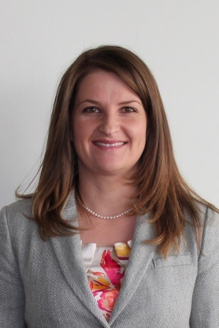
September 7, 2022
From Green to Red: Quantifying Metabolism Across the Kingdoms
Nannette Boyle
Colorado School of Mines
Golden, CO
Abstract: Metabolism powers all life on Earth and even the simplest organisms have complex and interwoven metabolic pathways. The Boyle Laboratory combines chemical engineering principles such as mass and energy balances with experimental systems biology to simulate and quantify in vivo metabolic fluxes across a wide array of species. The metabolic flux maps that result from this can be used to develop a better understanding of cellular physiology, identify engineering targets to manipulate carbon flux or to optimize growth conditions. In this talk, I will highlight two ongoing projects in the lab: (i) metabolic modeling of diurnal growth in algae to aide in metabolic engineering for biofuels production and (ii) experimental approaches to quantify changes in metabolism that occur in platelets upon clotting and the impact of oral contraceptives on activation.
Bio: Nanette Boyle is an associate professor in chemical & biological engineering at Colorado School of Mines. The Boyle Laboratory focuses on the application of chemical engineering principles, systems biology and synthetic biology to interrogate biological systems. She received her B.S.E. in chemical engineering from Arizona State University and her PhD in chemical engineering from Purdue University, where she was an NSF graduate research fellow. Nanette joined the faculty at Mines in 2013 after completing two postdoctoral fellowships at CU Boulder and UCLA. She is a DOE early career program awardee, a Scialog Fellow for Negative Emission Science and most recently a Fulbright Scholar in The Netherlands.

September 14, 2022
From systems biology to molecular mechanisms of disease and drug discovery
Priya Shah
UC Davis
Davis, CA
Abstract: The Shah Lab develops and applies quantitative systems biology tools to study biological processes at the network and pathway level. This musically-inspired seminar highlights two quantitative systems biology stories from the Shah Lab. In the first story, we travel from large-scale global proteomics to amino acid resolution to unravel molecular mechanisms of viral microcephaly. In the second story, we develop a theoretical framework and live-cell microscopy workflow to reveal how autophagy, an antimicrobial and disease-associated pathway, can be pharmacologically fine-tuned.
Bio: Dr. Priya Shah is an assistant professor of Chemical Engineering and Microbiology & Molecular Genetics at UC Davis. Her group works at the intersection of these two disciplines, applying quantitative systems biology tools to study biological processes with a focus on virus-host interactions. Dr. Shah grew up in Toledo, Ohio, and had her first research experience in a biochemistry lab at University of Toledo. She received her B.S. in Chemical Engineering from MIT, and her Ph.D. in Chemical Engineering from UC Berkeley with David Schaffer. Dr. Shah did her postdoc in systems virology at UCSF with Nevan Krogan and Raul Andino. When not doing science, she enjoys improvising 90s music into songs about family members (usually the dog).
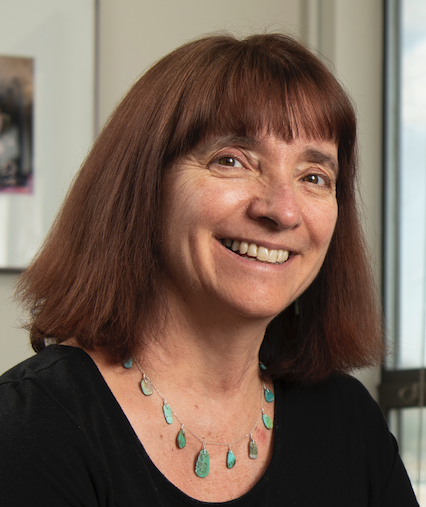
September 21, 2022
Identifying SARS-CoV-2 and Monkeypox Variants and Understanding the Evolutionary Implications
Bette Korber
LANL
Los Alamos, NM
Abstract: In this talk I will cover some of the unusual aspects of both SARS-CoV-2 evolution during the pandemic, and monkeypox evolution during it recent expansion in the human population. The LANL team has been part of the SARS-CoV-2 NIH SAVE project to identifying newly emergent SARS-CoV-2 sequences. We track their dynamics and work to enable researchers to get the most representative forms of these variants onto the lab bench and analyzed for immune resistance, infectivity, and pathogenesis, and bring you will discuss the methods we use to track the viral evolution and the evolutionary implications of the mutations that we observe. We have also recently been helping the CDC with their monkeypox sequence analysis effort, and have shown that monkeypox viruses evolve employing several unusual mechanisms, include mutations that are associated with a pattern of mutation that results from human APOBEC3 enzymatic modification of the viral genome.
Bio: I am a Laboratory Fellow at Los Alamos National Laboratory in the Theoretical Biology and Biophysics group, with a joint appointment at the New Mexico Consortium. I have been involved in the field of viral evolution and vaccine design since the 1990’s. My professional career has been devoted to the study of pathogen evolution and the immune response. While my work has primarily focused on contributing to the global efforts to make an effective HIV vaccine, I have also worked on Ebola and Swine Flu vaccine design strategies to be prepared for future zoonoses, and have SARS-CoV-2 variant design vaccine strategies in the pipeline. Beyond vaccine design I have worked on the evolution of emerging pathogens and zoonoses, designed panels for assessing breadth of immune responses to variable pathogens including HIV-1 and SAR-CoV-2, tracked the evolution of drug resistance, and helped design immunotherapeutic approaches for therapy, and I have worked on spectrum of pathogens including Tuberculosis, Ebola and Hepatitis C. I am currently serving in the NIH SARS-CoV-2 Assessment of Viral Evolution (SAVE) Early Detection Group, and have developed strategies for tracking newly emergent SARS-CoV-2 variants as they arise using a suite of tools that my group has made publicly accessible at cov.lanl.gov, and have also been been assisting the CDC in studying monkeypox evolution leading to the current outbreak.
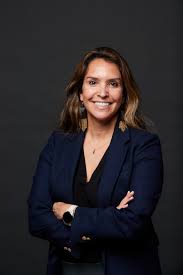
September 28, 2022
Applications of fluorescence lifetime measurements in flow cytometry
Jessica Houston
NMSU
Las Cruces, NM
Abstract: Methods for high throughput single-cell analyses have become quite complex over the last decade with emerging technologies that advance the speed of imaging and sorting as well as enhance the number of parameters that can be measured from a single cell. Many instruments, cytometers, or similar devices provide essential features about cells because optical measurements provide not only spatial but also temporal information about the intracellular environment. Time-resolved flow cytometry (TRFC) is one form of cytometry that captures temporal information about fluorescent molecules inside the cell. Such information does not rely on brightness and often correlates to signaling events, molecular movement, and dynamics of molecular interaction. Various TRFC technologies will be presented as well as applications that focus on metabolic mapping of tamoxifen resistant breast cancer cells using autofluorescence. Focus will also be placed on a chip-based cytometer that utilizes acoustic focusing for more accurate fluorescence lifetime measurements. The long-term impact of this work is to develop new tools that provide more quantitative fluorescence information at the throughput of a flow cytometer.
Bio: Jessica Perea Houston, Ph.D., is a Professor of Chemical & Materials Engineering at New Mexico State University (NMSU) in Las Cruces, NM (2009-present). Jessica received her Ph.D. in Chemical Engineering from Texas A&M University (2005) and was a Director’s Postdoctoral Fellow at the Los Alamos National Laboratory Bioscience Division (2006-2009). She is an alumna of NMSU (’00) and is from Santa Fe, NM.

October 5, 2022
Computational Materials Science & Engineering – Applications at a National Laboratory
Luis Zepeda-Ruiz
LLNL
Livermore, CA
Abstract: The development of computational models for the simulation and prediction of the structure, properties, and behavior of heterogeneous materials is advancing our understanding of materials science and engineering at an increasing rate. In most cases, it requires the use of a variety of computational methods that span from an atomistic description of interactions to continuum numerical modeling. This is particularly true at a National Laboratory, where extensive research is performed with applications in future energy production, engineering innovations, materials strength, and national security. In this presentation I will show examples of my research at LLNL that combine theoretical and computational modeling techniques in support of the laboratory’s mission, focusing on the modelling of nucleation and growth in simple melts via non-equilibrium Molecular Dynamics simulations that are used towards the construction of a kinetic model for dynamically driven liquid-solid phase transitions.
Bio: Luis Zepeda-Ruiz is a staff scientist in the Material Dynamics and Kinetics Group of Lawrence Livermore National Laboratory (LLNL). He earned his B.S. in Physics at Universidad Nacional Autónoma de México – UNAM and received a scholarship to pursue a graduate degree in the US. He received a M.S. and a Ph.D. in Chemical Engineering from UC, Santa Barbara where he worked on the study of strain effects in III-V semiconductor epitaxy. After his postdoctoral studies in materials sciences at Princeton University, he joined LLNL in 2002. Since then, he has performed research in a wide range of materials – including metals, ceramics, organic and inorganic crystals, and explosives – using first-principles, Molecular Dynamics, and Monte Carlo computational techniques. His current research focuses on the study of material properties, defects and interfaces during growth and evolution. He is actively involved in a variety of professional societies, planning and organizing conferences and symposia, various government panels and working groups. He has authored or co-authored 70+ publications and technical reports 90+ invited and contributed talks.

October 12, 2022
Designing biomaterials with spatiotemporal control for tissue engineering applications
Julianne Holloway
ASU
Tempe, AZ
Abstract: Advances in materials science, biomolecule delivery, and cell biology has enabled significant innovations within the field of tissue engineering and regenerative medicine over the past few decades. Nonetheless, minimal translation of tissue engineering-based therapeutics to the clinic has occurred. A significant challenge within tissue engineering is the difficulty in regenerating complex tissues with a heterogeneous structure and multiple cell types. To address this challenge, my research group is developing innovative polymeric biomaterials that can mimic the complex microenvironment of musculoskeletal tissues. Specifically, I will discuss our recent efforts in the following areas: 1) using magnetic fields to spatially control electrospun fiber alignment in order to create materials with gradients in fiber alignment that mimic the structure of musculoskeletal interfacial tissues; 2) using reversible DNA handles to temporally control peptide presentation to improve our understanding of cell-material interactions; and 3) combining these techniques for independent spatial control over chemical and structural signals towards simultaneous regeneration of multiple tissue types.
Bio: Julianne Holloway is an Assistant Professor of Chemical Engineering at Arizona State University (ASU) and an associate faculty member within the Biodesign Institute’s Center for Molecular Design and Biomimetics. Prior to ASU, Julianne completed her Ph.D. in Chemical Engineering at Drexel University and her postdoctoral training at the University of Pennsylvania. Julianne’s research group integrates biomaterial design with innovative manufacturing to control and direct stem cell behavior for tissue engineering and regenerative medicine applications. Julianne is also committed to service, including serving as one of the inaugural faculty advisors for ASU’s Society for Biomaterials student chapter, recent election to the American Institute of Chemical Engineers (AIChE) Board of Directors, serving on the Editorial Board of Regenerative Biomaterials, and as a past Associate Scientific Advisor for Science Translational Medicine. Her contributions have been recognized through several awards, including: AIChE’s 35 Under 35 Award, AIChE’s John C. Chen Leadership Award, Mayo Clinic-ASU Alliance Faculty Summer Fellow, National Institutes of Health NRSA Postdoctoral Fellowship, and others.

October 19, 2022
Non-equilibrium Thermodynamics in Electrochemical Systems
Xiao-Dong Zhou
University of Louisiana at Lafayette
Lafayette, LA
Abstract: Much of our understanding of physical behavior of materials is based on the concept of equilibrium, which lies at the heart of classical thermodynamics, condensed matter physics, and modern reaction kinetics. If a thermodynamic system is in equilibrium conditions, which is the situation when an energy system (e.g., a fuel cell or a battery) is under open circuit voltage, the surface and bulk of the electrode are only subject to fluctuation of thermodynamic qualities (e.g., temperature: T, pressure: P, molar number: n, and the chemical potential: μ). For the cases that are not at equilibrium, but are close to it, Onsager established linear reciprocal relationships between flux and thermodynamic force for a thermodynamic system in nonequilibrium states. These linear relationships are manifested in transport phenomena, which are non-equilibrium processes, such as ion diffusion and heat conduction.
If an electrochemical reaction takes place at an electrode of a fuel cell, electrolyzer, or battery, the thermodynamic states of the surface and bulk of an electrode are subject to external thermodynamic forces (e.g., DT, Dn, or Dμ). As a result, the electrochemical reaction at the surface causes all thermodynamic variables to change in both surface and bulk of an active electrode. In this seminar, I will use solid oxide cells and lithium-ion batteries as an example to address three questions related to materials in non-equilibrium thermodynamic states: (i) how do fast kinetics and high current in an operating electrochemical cell affect the thermodynamic states of its material constituents, (ii) whether or not the state of non-equilibrium can remain stable with constant flow of matter and energy, and (iii) what is the origin that governs activity and stability in solid oxide cells?
Bio: Professor Xiao-Dong Zhou is the Stuller Endowed Chair in the Chemical Engineering Department and the Director of the Institute for Materials Research and Innovations at the University of Louisiana at Lafayette. Dr. Zhou received J. B. Wagner Jr. Young Investigator Award in 2007 from the Electrochemistry Society (ECS) - High Temperature Materials (HTM) Division. He is the recipient of 2011 US DOD – DARPA Young Faculty Award. He serves as the Technical Editor of the Journal of The Electrochemical Society, an Associate Editor of the Journal of the American Ceramic Society, and the International Journal of Ceramic Engineering and Science of the American Ceramic Society. He is a Fellow of the Electrochemical Society.
His research interests span theoretical and experimental studies of materials and interfaces for energy systems, including batteries, fuel cells, and electrolyzers.
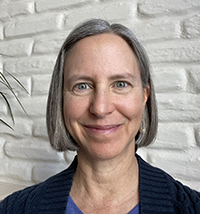
October 26, 2022
Insights into Hydrated Ion-Conducting Polymers from MD Simulations
Amalie Frischknecht
Sandia National Lab
Albuquerque, NM
Abstract: Hydrated ion-containing polymer membranes are used as electrolytes in a variety of applications, including in fuel cells and in alkaline batteries. Achieving high conductivity typically requires the hydrophobic backbone of the polymers to be nano-phase separated from the hydrophilic domains so that the ions (protons or hydroxide ions) have well-defined water channels for efficient transport. The ion transport thus depends strongly on the hydration level and the detailed morphology of the hydrophilic domains. It is often difficult to determine the morphology of these domains experimentally. Here I will present results from atomistic molecular dynamics (MD) simulations that reveal the domain morphology in three different ion-containing polymers. In all cases, increasing water content leads to the swelling of and an increase in the characteristic spacing between hydrophilic domains. However, this swelling can be obscured in X-ray scattering due to a loss of scattering contrast between the hydrophobic and hydrophilic domains. The MD simulations reveal that the systems are still nano-phase separated, even when X-ray scattering appears to indicate otherwise. Calculated and measured scattering profiles are in good qualitative agreement. Ion diffusivities calculated from the MD simulations follow the experimentally-measured trends in conductivity and are consistent with changes in the nanoscale morphology with changing water content. I will discuss implications of the results for the future design of ion-conducting polymers.
Bio: Amalie L. Frischknecht is a Principal Member of Technical Staff at Sandia National Laboratories, and a staff scientist at the Center for Integrated Nanotechnologies (CINT), a DOE Nanoscale Science Research Center and user facility at Sandia and Los Alamos National Labs. She received her PhD in Physics from the University of California, Santa Barbara, in 1998, and went on to postdocs at ExxonMobil Research and Engineering Company (1998-2000) and at Sandia National Laboratories (2000-2003), before becoming a member of technical staff at Sandia in 2003. Amalie is a Fellow of the American Physical Society (APS), and recently served in the Chair line of the APS Division of Polymer Physics. She previously chaired the Gordon Research Conference on Polymer Physics (2018). Her current research focuses on molecular simulations of polymeric systems, including polymer nanocomposites and ion-conducting polymers.
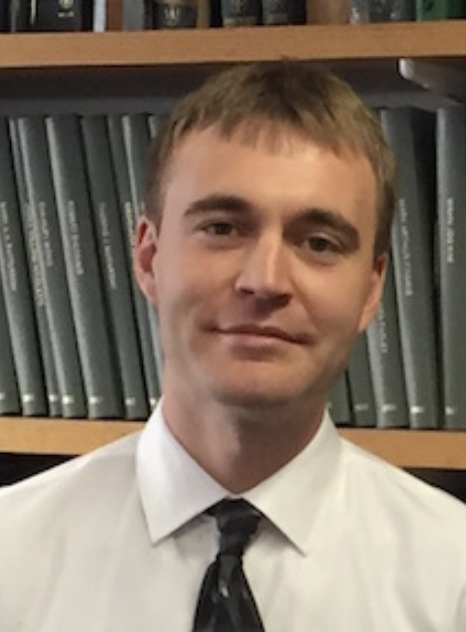
November 2, 2022
Systems Biocatalysis for Drug Discovery and Chemical Production
Jerome Fox
CU Boulder
Boulder, CO
Abstract: Cells rely on complex networks of interacting catalysts to regulate the biochemical processes that allow them to grow and survive in dynamic environments. Efforts to control these networks—or to predict system-wide behaviors—require an understanding of the structural and kinetic relationships that allow enzymes to collaborate within them. In this presentation, I will discuss my group’s efforts to use synthetic biology, optogenetics, and mathematical modeling to dissect—and then, rewire—biocatalytic systems responsible for two disparate processes: phosphorylation-mediated signaling in mammalian cells and oleochemical production in Escherichia coli. The talk begins with a single enzyme: protein tyrosine phosphatase 1B (PTP1B), a broadly important regulatory protein and an elusive drug target for type II diabetes, obesity, and breast cancer. Guided by detailed biophysical studies, my group has developed new approaches for placing this enzyme under optical control and for using microbial systems to guide the discovery and assembly of targeted inhibitors. The presentation shifts gears by examining a biocatalytic assembly line: the fatty acid synthase (FAS). Using detailed models of FAS activity, we have developed nonintuitive strategies for controlling fatty acid synthesis in microbial hosts. The results of our work show how evolutionary constraints on the structures of biomolecules can guide the design of tunable biocatalysts and biologically active agents. We will discuss applications in drug development and chemical production.
Bio: Jerome joined the University of Colorado, Boulder in January of 2016 as an Assistant Professor of Chemical and Biological Engineering. He completed his PhD in chemical engineering with Doug Clark and Harvey Blanch at the University of California, Berkeley in 2012, and he received a BS in environmental engineering from Johns Hopkins University in 2007. Prior to joining CU, he was a postdoc in the lab of George Whitesides at Harvard University, where he carried out research on molecular recognition, complex systems, and optical metamaterials. At CU, his lab focuses on the development of new methods to engineer biocatalytic networks for the discovery and synthesis of functional molecules (e.g., fuels, dyes, or pharmaceuticals) and the design of new classes of synthetic systems.
November 9, 2022
Programming Liquid-Liquid Phase Separation of Intrinsically Disordered Protein-Nucleic Acid Polymer Solutions
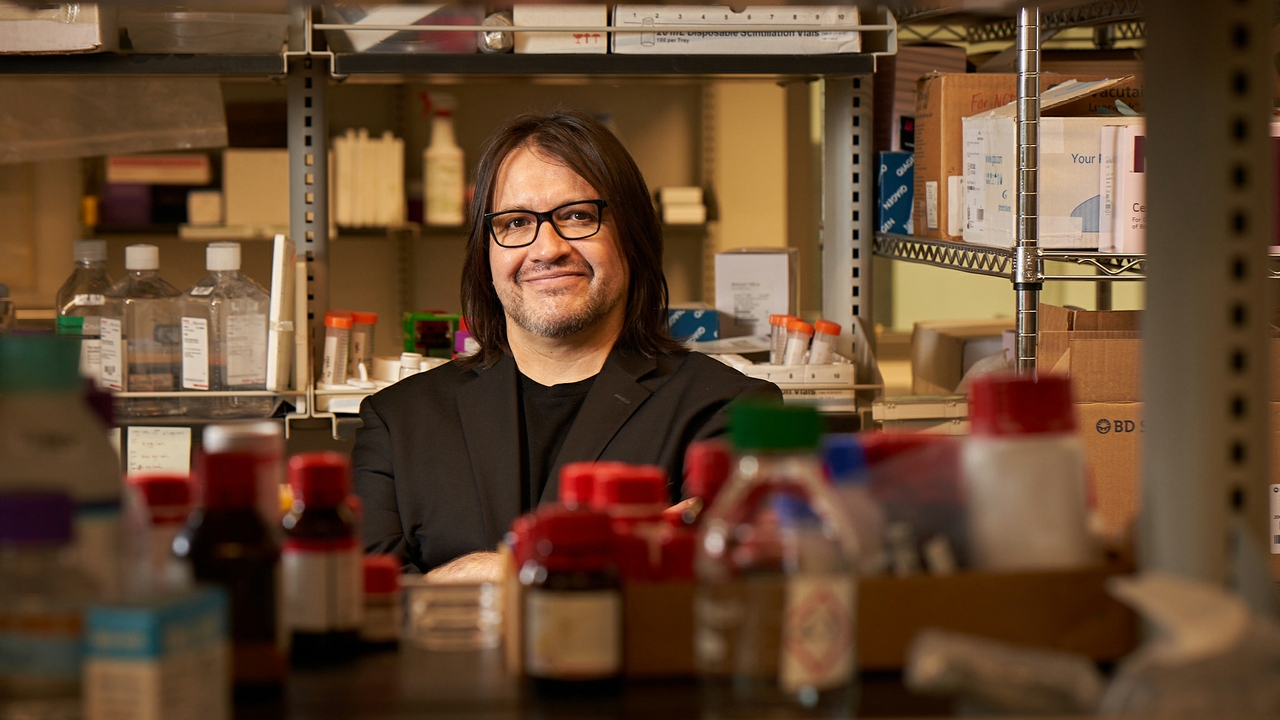
Nick Carroll
UNM
Albuquerque, NM
Abstract: Aqueous multi-phase systems comprising immiscible biopolymer solutions are ubiquitous in biological cells. However, the structure-to-function relationship and the physics describing the behavior of these polymer systems are, in general, not well understood. For example, almost all proteins have a specific three-dimensional structure that maintains its specific activity in the cell. One class of phase-separating proteins, which has flown under the radar for decades, do not. They are referred to as intrinsically disordered proteins (IDPs). Their role in the cell appears to be to spontaneously associate with other proteins and nucleic acids in phase-separated compartments called ‘membranes organelles’ to activate them collectively. This is an important function to include in the design of a synthetic cell and for integration with cellular regulatory systems.
Our work explores how we can leverage polymer physics combined with the blueprint provided by the cell to engineer synthetic membrane-less organelles comprising phase-separated protein/DNA/RNA components in microdroplets. Our experimental results characterizing the morphology and composition of these liquids are interpreted by simple mean field Flory-Huggins equilibrium thermodynamics combined with formalisms describing the dynamics of phase separation via Cahn-Hilliard and Lattice Boltzmann theories. Potential broader impacts of this work include understanding how these interactions affect the regulation of gene expression and cell metabolism, understanding how dysfunctional interactions are linked to neurodegenerative disorders, and the design of synthetic cellular systems to create membrane-less organelles to control a variety of biological processes at the molecular level.
Bio: Dr. Nick Carroll received his BS and Ph.D. in chemical engineering from The University of New Mexico. After his postdoctoral research at Harvard (applied physics) and Duke (biomedical engineering) Universities, he took a position as an assistant professor of chemical and biological engineering at UNM in 2016. His research mainly focuses on liquid phase separation of intrinsically disordered proteins that bind nucleic acids to create condensed phase assemblies that recapitulate the structure and environmental responsiveness of membrane-less organelles in living cells. In 2021, he received the NSF CAREER award, was selected as part of the 2021 Class of Influential Researchers by the American Chemical Society journal, Industrial & Engineering Chemistry Research (I&EC). Dr. Carroll has received $3.2M in research dollars from NSF and DOE funding agencies.
November 16, 2022
Oil phase displacement by acoustic streaming in a reservoir-on-a-chip micromodel
Jaime Juarez
Iowa State U
Ames, IA
Abstract: The talk presents a reservoir-on-a-chip study of acoustic streaming as an enhanced oil recovery mechanism. Microfluidic devices with different porosities are fabricated using photolithography to serve as reservoir-on-a-chip micromodels. We use microparticle image velocimetry to characterize acoustic streaming-induced pumping as a function of frequency and amplitude. A scaling model applied to the velocity distribution is used to construct a state diagram that connects acoustic pressure to field frequency and amplitude. Optical video fluorescence microscopy is used to track the invasion of a water phase through the oil-saturated porous micromodel. Based on these measurements, we calculate the Blake number as a function of frequency to show that our system exhibits a narrow band dynamic response consistent with a system operating near resonance. Our observations are compared to a general model for Blake number as a function of frequency, porosity and voltage amplitude that was derived from a force balance model of the micromodel undergoing forced oscillation. The results from this talk are broadly applicable to systems beyond enhanced oil recovery, including separations, bio-analytical instruments, additive manufacturing and flow control.
Bio: Jaime J. Juárez is an Assistant Professor of Mechanical Engineering at Iowa State University (ISU). Dr. Juárez received his B.S. degree from Stanford University and a M.S. degree from the University of Texas at San Antonio, both in mechanical engineering, and his Ph.D. in chemical and biomolecular engineering from the Johns Hopkins University. He was also a postdoctoral research associate at the University of Illinois, Urbana-Champaign and an NIH IRACDA fellow at the University of New Mexico. His research expertise is primarily in soft matter, with an emphasis on external field (i.e., acoustic, magnetic, electric) directed assembly of colloidal particles. Research applications include directed-field based improvements to materials produced through additive manufacturing, enhanced oil recovery, and fabrication of low-cost bioanalytical instrumentation.
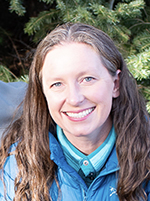
November 30, 2022
SERS-Based Assays for Detection of the SARS-CoV-2 Spike Protein
Karen Wawrousek
University of Wyoming
Laramie, WY
Abstract: The COVID-19 pandemic has highlighted the need for the rapid development of sensitive diagnostic assays. We have developed a rapid, point-of-care assay to detect the spike protein of the SARS-CoV-2 virus. The assay relies on the use of scFv (single chain variable fragment) antibody fragments for specific binding of the SARS-CoV-2 spike protein, with immunocomplex detection using SERS (surface-enhanced Raman spectroscopy). ScFv antibody fragments can be expressed in E. coli, making this approach less expensive than antibody production in animals or cell culture, while the sensitive SERS detection makes this assay more sensitive than lateral flow assays currently on the market. The assay has a limit of detection of 2x103 SARS-CoV-2 genomes/ml or 5 fg/ml SARS-CoV-2 spike protein, which is below the viral load of an infectious individual and only 2-3 times less sensitive than the New York SARS-CoV-2 Real-time Reverse Transcriptase (RT)-PCR Diagnostic Panel. In this talk, I will discuss development and validation of the assay, as well as further developments and improvements for SERS-based SARS-CoV-2 detection.
Bio: Dr. Wawrousek earned her PhD in Biochemistry and Molecular Biophysics from Caltech, followed by postdoctoral research on biohydrogen production at the National Renewable Energy Laboratory. She then joined Western Research Institute, a non-profit research corporation, to work on bioproduction of fuels and chemicals. She joined the Chemical and Biomedical Engineering Department at the University of Wyoming in 2014, where her laboratory uses a variety of techniques to focus on 1) development of diagnostic assays, 2) engineering of non-model microbes for fuel and chemical production, and 3) characterizing microbial communities in the deep subsurface.

December 7, 2022
DNA at the Multi-Scale: Theory and Applications
Will Bricker
UNM
Albuquerque, NM
Abstract: The Holliday junction motif in nucleic acids is utilized as a building block to create strand crossovers between duplexes of DNA, and repeated use of this motif allows the creation of large-scale wireframe structures in arbitrary 2D and 3D shapes, called DNA origami. In this talk, we investigate the properties of DNA at various scales, including electronic-level properties, sequence effects at the junction level, and overall dynamics of large-scale DNA origami assemblies. Accurate electronic structure calculations of DNA sequences are difficult-to-impossible due to extremely inefficient scaling of quantum chemical calculations as the system size increases. It is shown that a machine learning algorithm based on Euclidean neural networks, where the training data includes accurate electronic structure calculations of smaller fragments of DNA, namely, the relevant base-pair steps, can be utilized to reproduce the electron density of arbitrary DNA sequences to an error of less than 1%. A major goal with this model is to utilize these ML electron densities to predict atomic forces and simulate the ab initio molecular dynamics (AIMD) of arbitrary DNA structures. At the molecular level, DNA junctions are utilized as the basic building block of DNA origami, but the base sequence effects on these junctions are not well understood. By utilizing classical molecular dynamics simulations, it is shown that changing the core sequence at the junction has a dramatic effect on the isomerization energies and dynamics of the Holliday junction motif. The system-level effect of motif design on large-scale DNA origami structures is difficult to quantify, but global system dynamics of these DNA origami structures can be simulated as well using molecular dynamics. Finally, we will consider why it is important to understand the properties of DNA at these various levels of scale with an energy transfer application. DNA origami can be utilized as a scaffold for photoactive molecules, with the goal of creating an efficient energy transfer network. It is seen that both the local and global properties of the DNA scaffold itself influence the energy transfer between scaffolded photoactive molecules, hence it is important to fully understand DNA at the multi-scale.
Bio: Prof. William Bricker is an Assistant Professor in the Department of Chemical and Biological Engineering at the University of New Mexico, starting in the Fall of 2019. He received his PhD in Energy, Environmental, and Chemical Engineering at Washington University in St. Louis in 2014, and continued his training as a postdoctoral associate in the Biological Engineering department at MIT from 2015-2019. His current research focuses on attempting to understand structure-to-function relationships in biology by utilizing tools from computational chemistry, with a focus on structural DNA nanotechnology and biological energy transfer.
